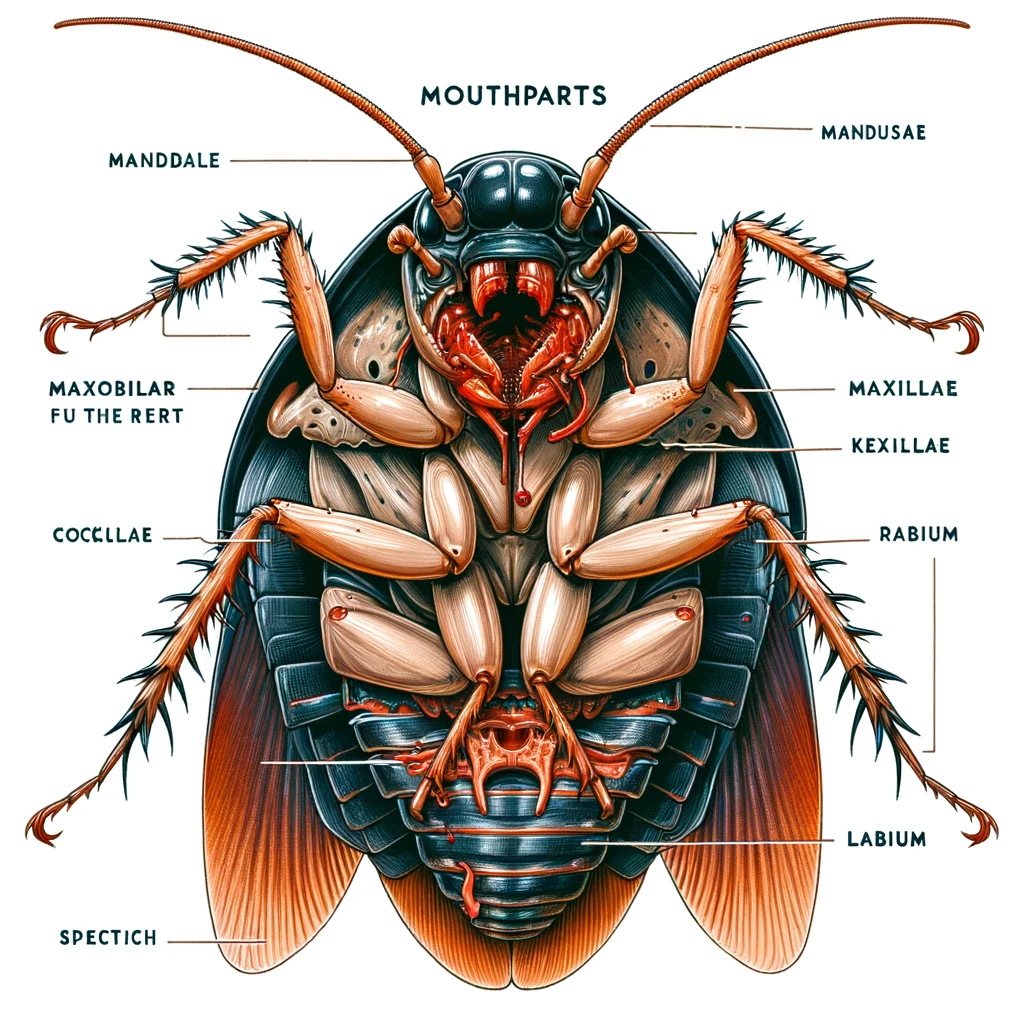Cockroach Mouth Parts, Structure, and Functions: A Closer Look
 Introduction to Cockroach Anatomy
Introduction to Cockroach Anatomy
Cockroaches are among the most adaptable and resilient creatures on the planet, thriving in a wide range of environments. A key to their survival is their unique anatomy, particularly the structure and function of their mouth parts. Understanding these can provide fascinating insights into how cockroaches feed, interact with their environments, and why they are such successful survivors.
Exploring the Mouth Structure
The Complex Mouthparts of a Cockroach
Cockroaches have a complex set of mouth parts, adapted to their omnivorous diet. Unlike humans, cockroach mouth parts are not located on the front of the head but are directed downwards and backwards, hidden under the head when not in use. This arrangement is known as a hypognathous head.
Components of Cockroach Mouth Parts
- Mandibles: These are the jaws of the cockroach, used for crushing, cutting, and manipulating food. They are powerful and highly adapted to a cockroach’s varied diet.
- Maxillae: Situated behind the mandibles, the maxillae further manipulate and process the food, pushing it towards the back of the mouth.
- Labium: Often referred to as the lower lip, the labium helps hold and manipulate food.
- Labrum: Acting as the upper lip, the labrum assists in directing food into the mouth.
- Hypopharynx: This is a small, tongue-like structure that helps with swallowing.
The Role of Mouth Parts in Feeding
Versatile Diet and Feeding Habits
Cockroaches are known for their versatile diet, feeding on anything from food scraps to fecal matter. The specialized mouth parts allow them to consume solid and liquid food, making them one of the most adaptable pests.
Processing and Digesting Food
Once food is captured and manipulated by the mandibles and maxillae, it’s directed towards the pharynx and down into the digestive system. The efficiency of their mouth parts allows cockroaches to feed on a wide variety of materials, contributing to their ability to survive in harsh conditions.
Conclusion: Masters of Adaptation
The intricate structure and functionality of cockroach mouth parts are a testament to their evolutionary success. These adaptations not only allow cockroaches to feed on an almost limitless range of organic materials but also contribute to their resilience as pests. Understanding the anatomy and feeding habits of cockroaches can provide valuable insights for effective pest management strategies.
- The Life Span of a Cockroach
- Do Cockroaches Eat Clothes?
- Do Cockroaches Have Teeth?
- Shrimps and Cockroaches
- Will Sleeping with the Light On Keep Cockroaches Away?
- How to get roaches out of your car overnight
- Do Cockroaches Feel Pain?
- How Many Legs Do Cockroaches Have?
- Comparing Cockroach Eggs Size for Different Types of Cockroaches
- Identifying a Cockroach Bite on the Lips or Face
- Black Water Bug Identification and Control
- Why Do Water Bugs Come Out At Night?
- What Does Roach Rash Look Like?
- Can Cockroaches Bite Your Eyelid?
- Can Cockroaches Live in Your Balls?
- How did cockroaches get their name?
- Why Do Cockroaches Shed Their Skin?
- What Smell do Palmetto Bugs Hate?
- Baby Palmetto Bug: Identification and Control
- Cockroach Eggs vs Poop: How to Tell the Difference
- How to Get Rid of Water Bugs
- How Long Can a Cockroach Live Without Air?
- The Lifecycle of the German Cockroach: From Egg to Adult
- Do Mice Eat Roaches
- Wood Roach vs. Cockroach

